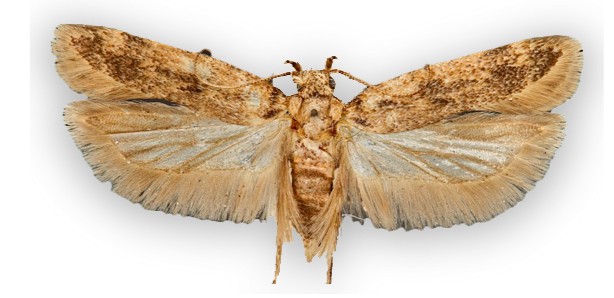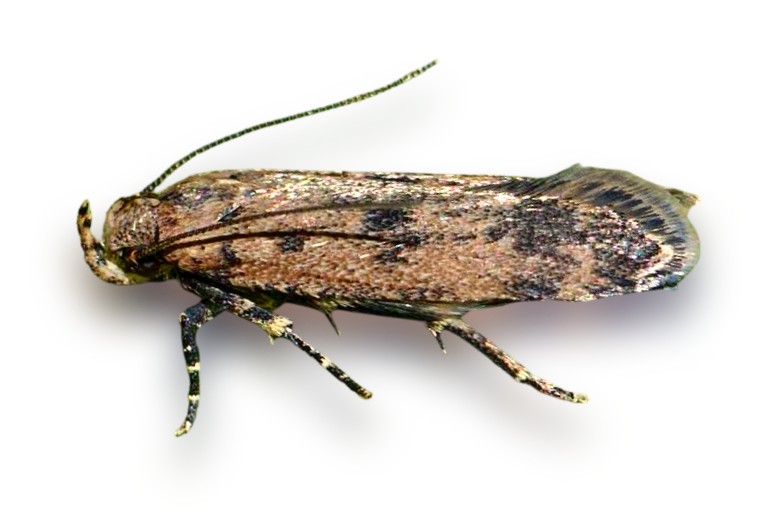Pink Bollworm in Cotton
Pink Bollworm in Cotton
Cotton is one of the essential fibre crops universally. It is a commercially important versatile crop. India is the second-largest producer of cotton worldwide, accounts for about 25% of the world’s cotton production. In India, three regions include 11 major states where cotton is grown i.e., northern region (Punjab, Haryana, Rajasthan and Orissa), central (Gujarat, Maharashtra and Madhya Pradesh) and southern (Karnataka, Telangana, Andhra Pradesh and Tamil Nadu). Pink Bollworm (PBW) also called Pectinophora gossypiella causes the main damage of about 92% in cotton crops everywhere in India. Widespread infestation of pink bollworms on cotton crops has alarmed India. Apparently, PBW has been observed as a major threat to the cotton crop in India. Destruction of cotton bolls is caused by larvae of the pink bollworm.
In local Indian languages, it is called “Gulabi sundi” in Hindi and “Gulabi bondali” in Marathi. Mainly PBW infection occurs in the middle phase of the crop and remains till its maturity.


Life Cycle of Pink Bollworm
The whole development of PBW takes place with four phases and the lifecycle completes in 25-35 days. It initiates from the eggs which are laid down on cotton bolls. About four to six generations of PBW are completed each year.
Egg: Adult female PBW lays down a single egg or group of eggs. In spring, eggs of first field generation are laid down on the vegetative cotton plant, on or near to the cotton square. Further generation eggs are laid beneath the calyx of bolls. In the initial phase eggs appear in lustrous white in colour, flattened oval in shape of about 0.5 mm in length, 0.25 mm wide and fashioned in longitudinal lines. Further, they are converted into larvae after hatching.
Larva: After hatching the eggs, larvae start bore inside the bolls. Before flower, blossom larvae complete their development inside the boll and this causes “rosetted blossom”. Until the second growth stage larvae seem to be white with the brown head but later develop into pink colour, after completion of the fourth stage. The sclerotized prothoracic shield gives a distinctive brown coloured head to the developed larva. Formation of larva takes place in about 12 to 15 days and further undergo pupation.
Pupa: Pupa is the stage that occurs between the larval and adult stage. The development of pupae from larva is “pupation”. This transformation occurs in the top layer of soil under the cotton plant. In the beginning, pupae are light brown and slowly become dark brown. They grow up to 7 mm long. The total pupal period lasts for about 7 to 8 days.
Adult Insect: Adult moth or lep of pink bollworm is greyish brown with black bands on the forewings and silvery grey hind wings. They emerge out of pupae in a 1:1 ratio of male to female. Further, in 2 to 3 days, female mates and prepare to lay eggs. Furthermore, in 10 days most of the eggs are laid down by females. Both males and females may live for 1-2 months on the bottom of the leaves of the plant. Adult insects are nocturnal. They come forth from pupae in the morning or evening time. During nighttime, moths hide amid soil debris.


Nature of Damage :
Larval attacks on flower buds of less than 10 days age, bud sheds and subsequently larva die. Whereas in older buds; larva completes its development and transformed into a whole insect. Larvae feed on the developing seeds. Interloculi movement is also seen. Several larvae can infest a single boll.
Symptoms:
- Rosetted flowers i.e., improper opening of flower petals.
- Small exit holes on developing green bolls
- Improper boll opening with damaged seeds.
- Small rounded holes on the septa between locules of open bolls.
- Destroyed seeds and stained lint.


